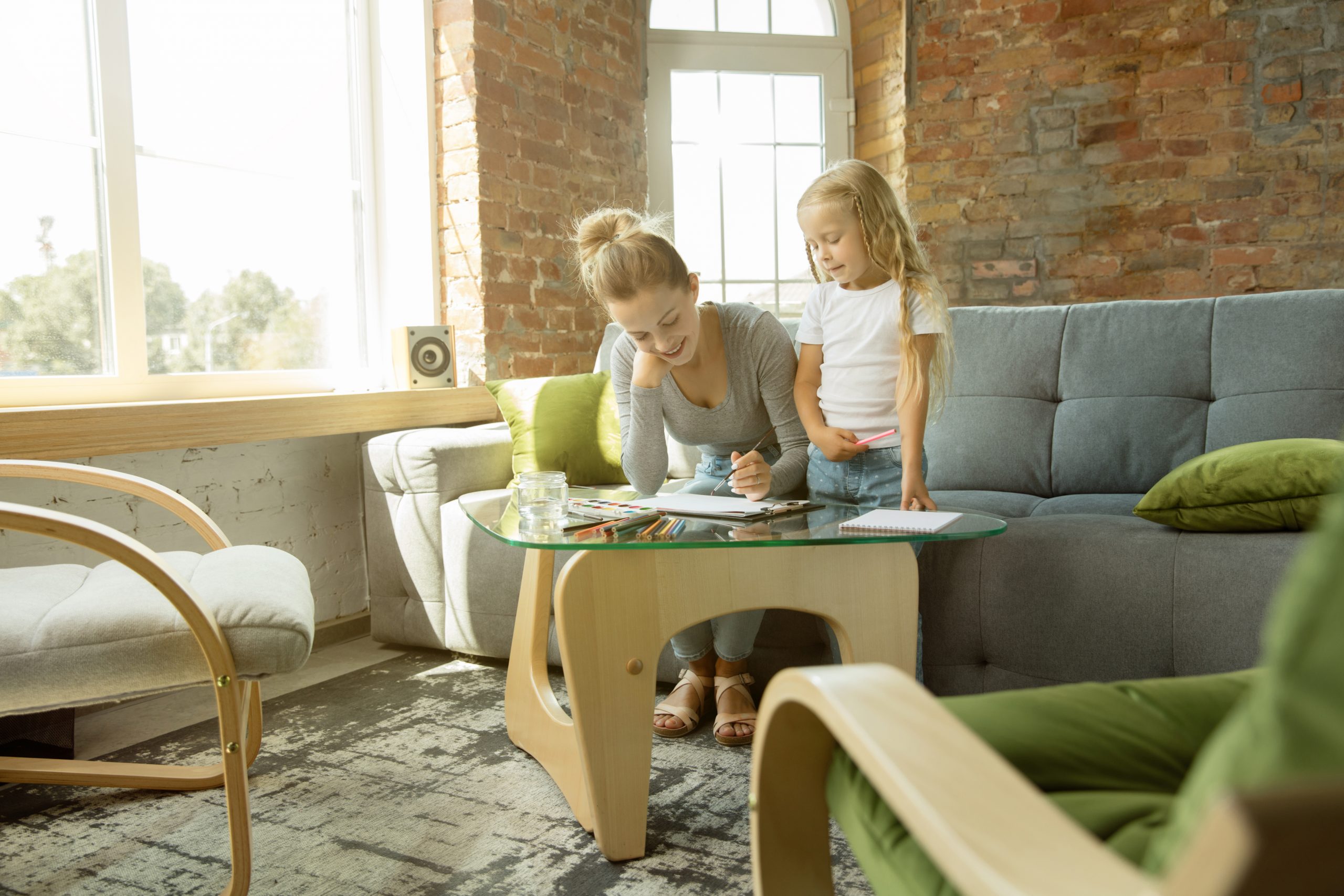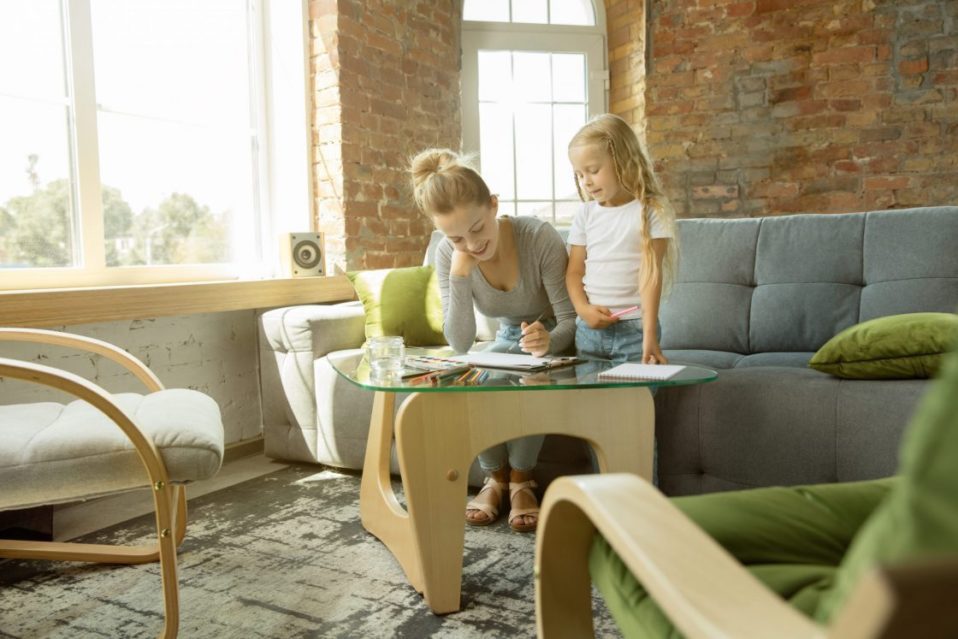
Life is volatile; that much is certain. However, there are some curveballs that life throws your way that completely blindside you. The COVID-19 pandemic is something the world never saw coming and its subsequent rapid spread across the globe has put governments and global citizens on the edge.
As part of containment measures, many municipalities have ordered the closure of their learning facilities. Even private schools, which are typically smaller — 87% have fewer than 300 students — have closed their doors to reduce the spread of COVID. This abrupt closure has meant interference with learning curriculums, with kids being forced to stay at home. Parents have now become de facto teachers, required to embrace homeschooling as a means of educating their kids.
For a lot of parents, homeschooling is a foreign concept. It’s like being tossed in the deep end when you can barely swim. It’s bound to be harder for single parents, with approximately 1.5 million kids living in single-parent homes following the loss of a parent. For divorced parents who act as the non-custodial parent, this might be part of the 88-day period each year you get to spend with your kid. With the indefinite closure of schools, how can you adapt to meet your child’s educational needs from the confines of your home?
There’s that famous adage, “Failing to plan is planning to fail.” Therefore, the first thing you need to embrace is scheduling. Set a time for when your kids wake up, have their breakfast, and then sit down to do a bit of reading and problem-solving. Remember, kids have limited attention spans. Forcing them to buckle down for hours-on-end isn’t realistic. However, getting them used to a set routine helps them understand when it’s study time.
If you have older kids, say pre-teens or teenagers, you could involve them in coming up with their own routines. Laura Chang, 2019’s Michigan Teacher of the Year, recommends setting aside blocks of time for math, science, writing, and reading exploration. One Los Angeles middle school teacher, Terry Williamson, adds that flexibility is fundamental to achieving the ideal work-play balance. If your kids seem stressed, bump up movie time or playtime and come back to the studying later.
Of course, homeschooling comes with the responsibility of feeding your kids. The school food industry serves approximately 4.9 billion lunches each year, making it more substantial than the nation’s biggest restaurant chains. Homeschooling means you are your kids’ constant food provider. Before, the task of maintaining a balanced diet was the school’s responsibility; now, you have to come up with a balanced meal plan for your kids to ensure they remain healthy and have enough energy to make it through the day.
That said, feeding your kids will probably come more naturally to you than teaching them what they ordinarily learn in school. When it comes to reading tasks, try to ensure your kids spend at least 20 minutes a day reading to maintain their literacy skills. If you have preschoolers who aren’t up to speed with reading for themselves, then consider reading to them. It doesn’t have to be academic content, either. Let your young ones read stuff they’re interested in — be it comics or kid’s magazines. If they’d rather sit on the floor or stretch out on the sofa while reading, then let them.
There’s the long-standing notion that “core” subjects (which include science, social studies, math, and English) should be given most focus. However, it’s important to note that learning goes beyond these core subjects. Not only are some students more gifted in the field of arts, but there’s data to suggest that involvement in these subjects benefits cognitive development as a whole. Schools have been keen to recognize artistic students, with these students being four times more likely to receive recognition for academic achievements and three times as likely to receive school attendance rewards.
Now, you might be the type of parent who isn’t quite in touch with their artistic side. The thought of approaching an art-based lesson may seem daunting. The beauty of art is that it can be taught in a variety of approaches. With the closure of many art museums and historical sites, consider taking online virtual museum tours. If your child loves something more hands-on, then consider a craft such as paper crafting or even embroidery. The options are plentiful.
Following the closure of schools, a lot of companies are offering loads of free online resources for students. Companies such as Buncee, ClassDojo, Cisco Webex, and Classtime offer access to in-class teaching resources coupled with feedback. These companies also offer efficient assessment platforms that give immediate visibility of your child’s learning progress. During this period of school closure, some of these companies allow you premium access to curriculum-based question banks and collaborative challenges to keep your child engaged.
A useful hack to keep in mind is that, when it comes to homeschooling, you don’t need to replicate your kid’s school schedule. Contrary to what you might think, engaging in school work at home doesn’t take up as much time as a full school day. School routines tend to have a lot of transition times and class periods that may not even involve a lot of actual learning. While homeschooling, you’ll find that it takes around three hours to complete the necessary amount of work.
Right now, a lot of schools and teachers are using different ways — such as online lessons or content packets — to help out their students. Get in touch with your child’s school and inquire about these options. If that’s not the case for your kid’s school, there are still plenty of free online activities you can try out.
Forget about the “all work and no play” mentality. Having your kids cooped up indoors for hours won’t do them much good. There’s a reason schools allow recess and free periods. These activities provide a necessary break from the rigors of classroom work and allow for cognitive, emotional, social, and physical benefits. Set aside an hour each day in between lessons and let your kids unwind a bit.
Homeschooling is also a great way to teach your kids a few life skills. Have them do laundry or clean the dishes once in a while. This period might also be a great time to teach them how to cook or bake and get to enjoy each other’s company after a day of learning.
For now, nobody’s sure how long COVID-19 will last. Homeschooling remains an excellent way for your kids to keep learning. In time, you might realize that you’re better at it than you give yourself credit for.






